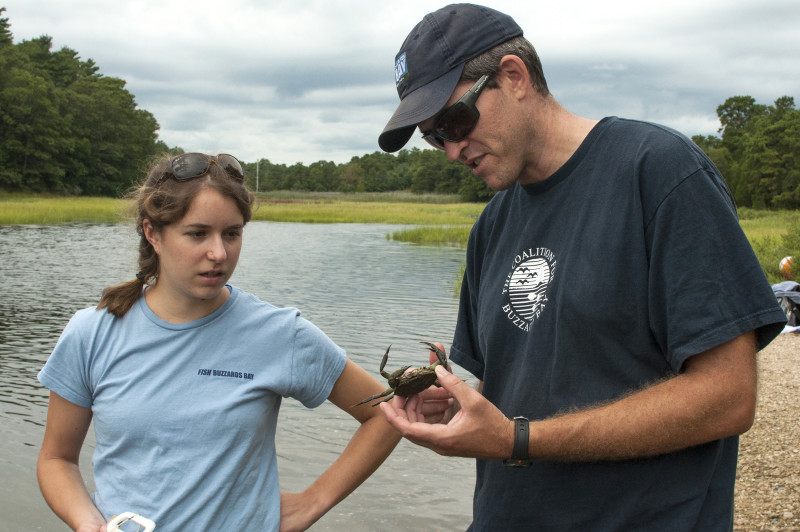Lyman Reserve
Discover a diverse paradise of woods, wetlands, and shorelines at the Lyman Reserve, which protects a treasured coldwater trout stream as it flows into Buttermilk Bay. Owned by The Trustees, this 210-acre property spans the borders of Bourne, Plymouth, and Wareham, showcasing the unique coastal habitats and iconic scenery of upper Buzzards Bay.
Features

Explore the salt marsh at the Lyman Reserve, where you can catch blue crabs and discover life by the shores of Red Brook.
The Lyman Reserve sits at the mouth of Red Brook, a pristine coldwater stream where rare sea-run brook trout spawn. Led by Theodore Lyman in the late 1800s, the Lyman family purchased hundreds of acres around Red Brook to conserve a critical habitat for these native “salters.”
The land that surrounds Red Brook is ecologically rich; with wooded uplands, swampy wetlands, and sandy shores, the Lyman Reserve is a fascinating place for outdoor enthusiasts to explore. Visit in summer to paddle the sparkling waters of Buttermilk Bay, or in fall to hike or fish by the red maple swamp. In the distance, catch a glimpse of the Cape Cod Canal railroad bridge towering above the trees.
Trails
More than a mile of hiking trails snake through the Lyman Reserve, providing a gateway to explore this naturally diverse treasure. (Download trail map)
From the parking area, follow the left-leading trail to discover a 1.5-mile path through wetlands and woodlands. Soak up stunning views of swamps and salt marshes as you cross a rustic footbridge over Red Brook. Keep following the trail along the stream, or turn left to loop through a patch of scrubby pine barrens.
To reach the beach, carefully cross Red Brook Road toward the yellow Lyman Cottage. You’ll enjoy the short, scenic quarter-mile trail leading to the gently lapping waves of Buttermilk Bay. For paddlers, this path is just the right length to carry a kayak or paddleboard to the water’s edge.
The Trustees recommends taking at least an hour to explore this property. But with so much to see and do here, we suggest you forget your watch at home and let adventure lead.
Habitats & Wildlife
The star of the Lyman Reserve is Red Brook, a spring-fed coldwater stream that’s home to one of the best native sea-run brook trout fisheries in the eastern United States. Red Brook is a popular destination for fly fishers – but it’s catch-and-release only to protect the future of the fishery. Freshwater wetlands along Red Brook give way to forested uplands, where a mix of pines and oaks grow.
Tucked away on the other side of the road, Buttermilk Bay’s coastal shoreline features a sandy beach and salt marsh where wildlife like herons and egrets thrive. Peek into the marsh to search for blue crabs, and watch for ospreys that nest near the shore in summer.

 Download Property Map
Download Property Map